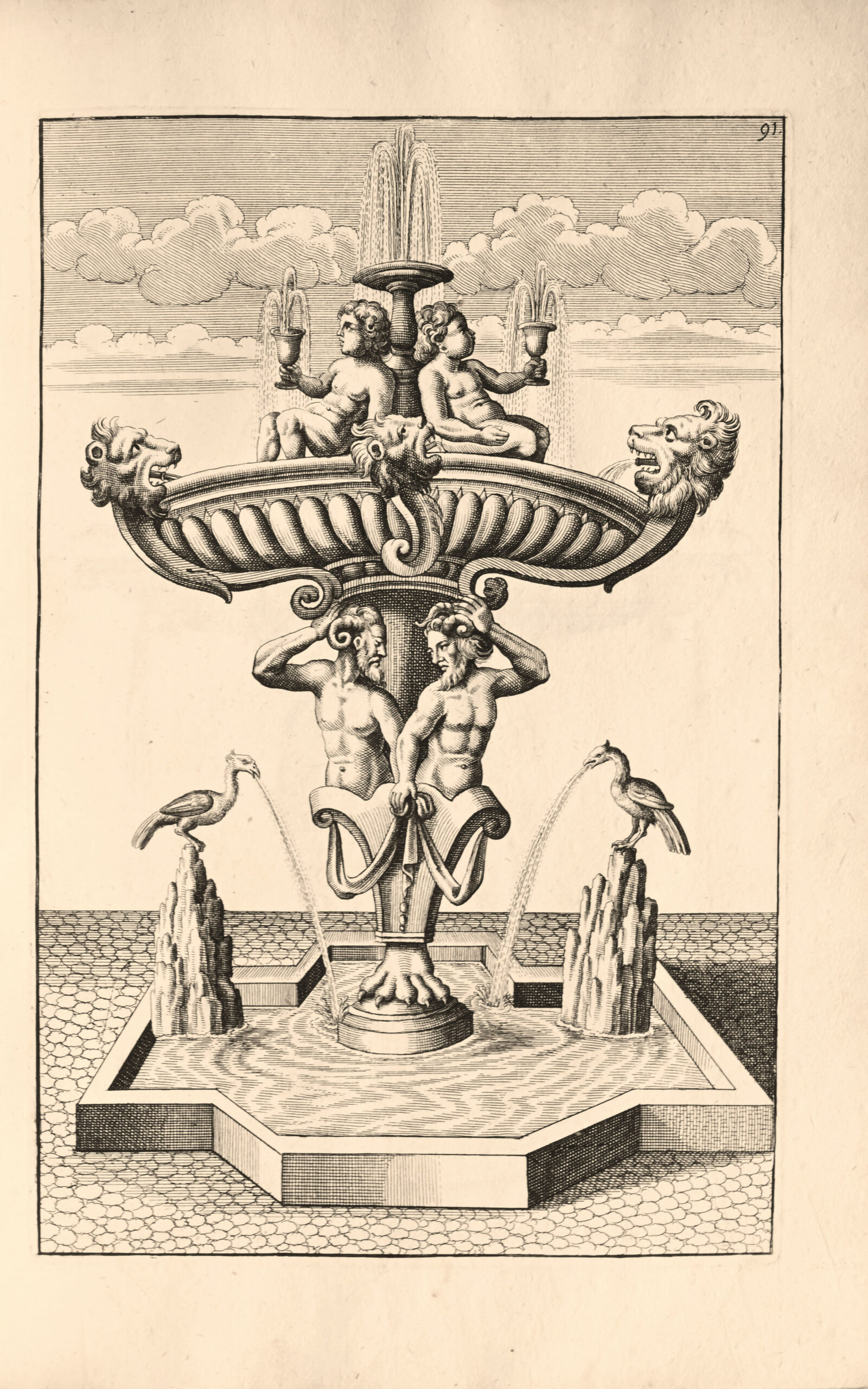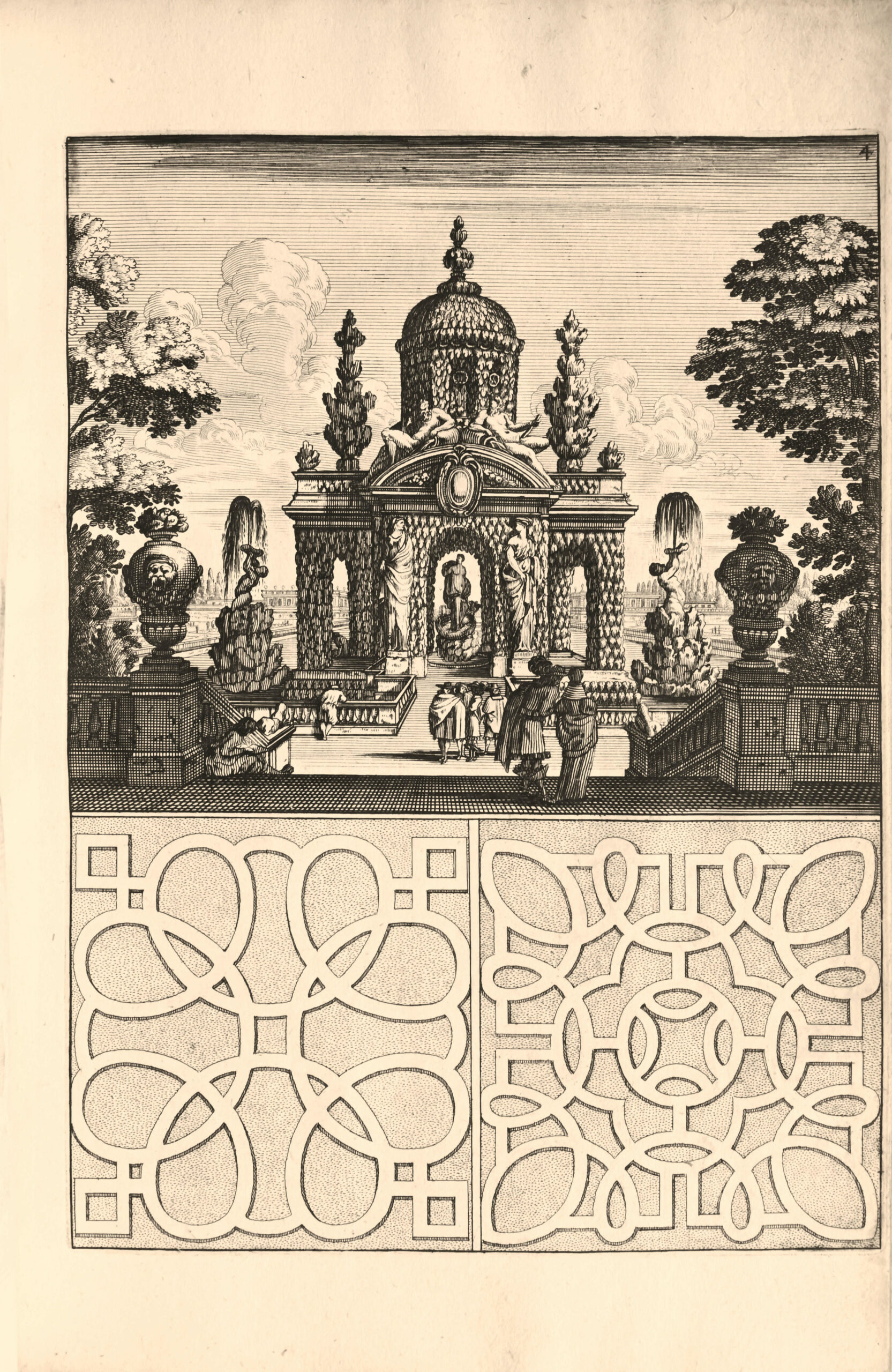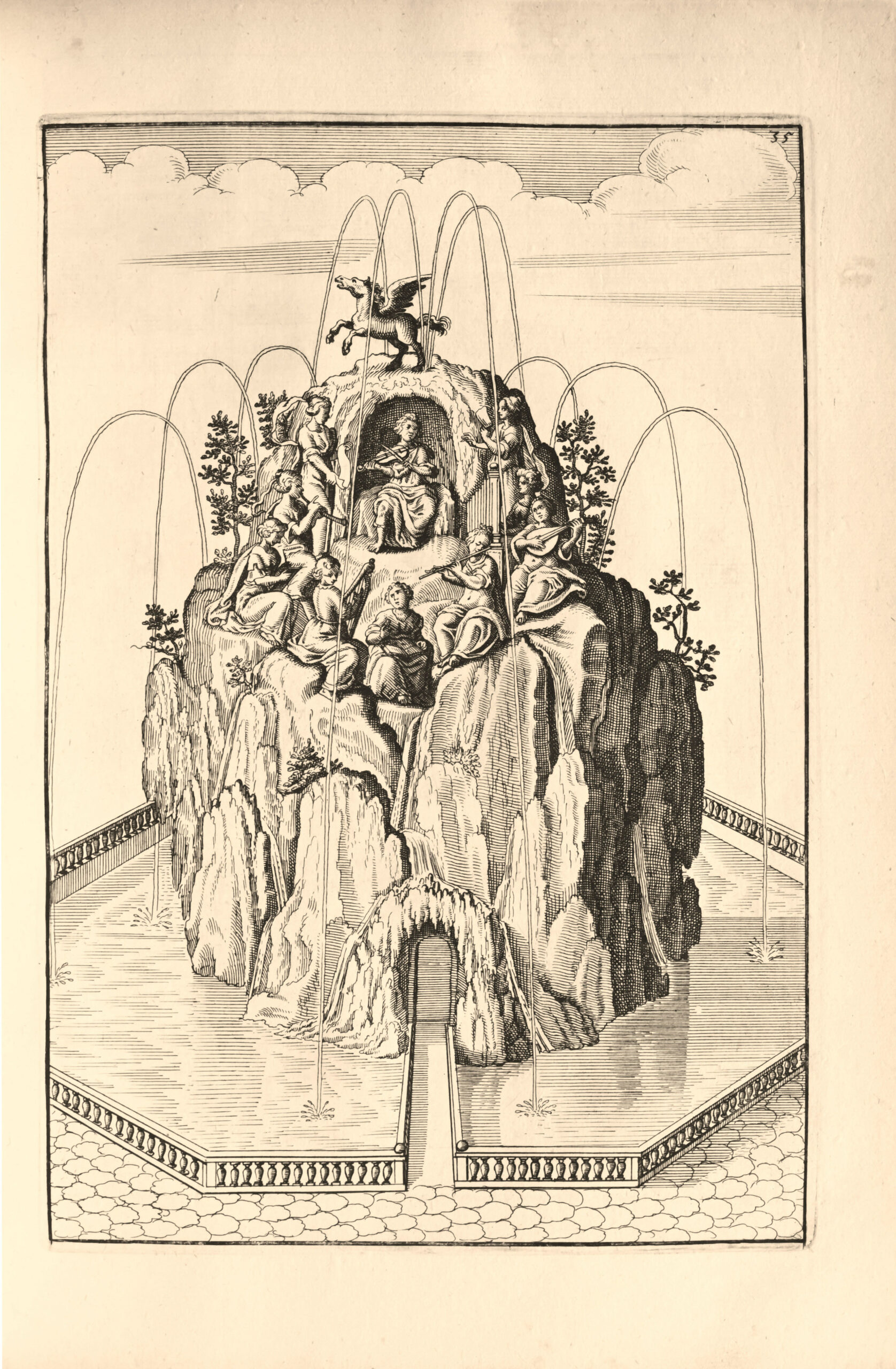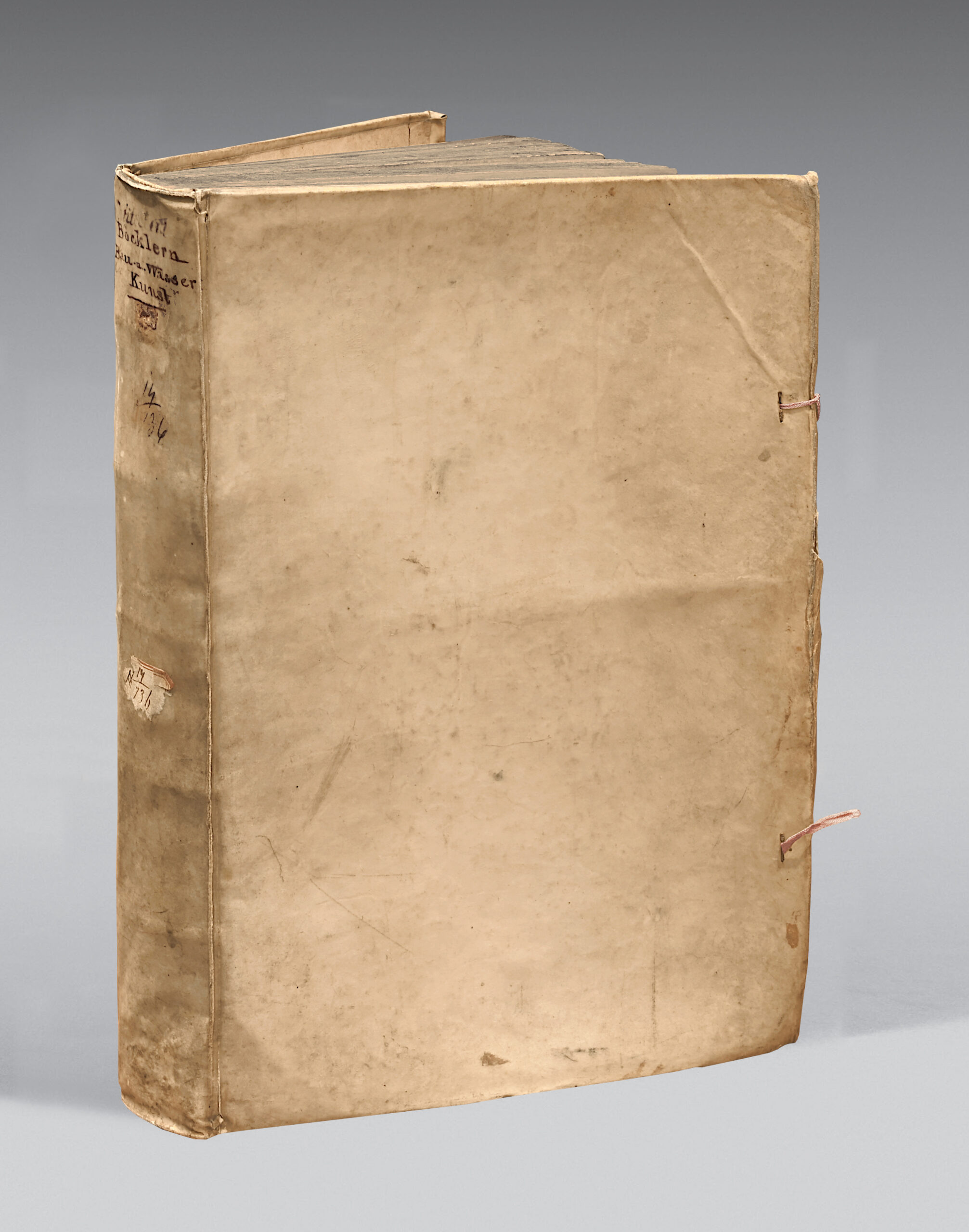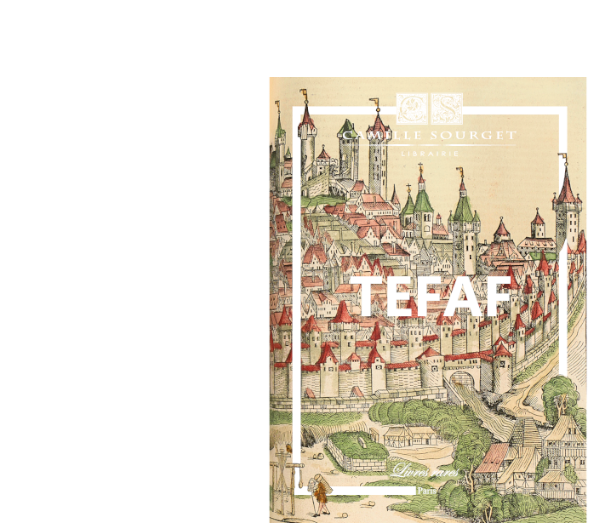Nuremberg, Paul Fursten, 1664.
4 parts in 1 folio volume of: I/ 1 frontispiece, (3) ll., 32 pp., 4 plates; II/ (1) l., 14 pp., 44 plates; III/ (1) l., 26 pp., 116 plates of which 1 folded (small têr to folded plate); IV/ (1) bl.l., (1) l., 29 pp., 36 plates. Bound in contemporary overlapping stiff vellum, remains of ties, flat spine. Contemporary binding.
327 x 218 mm.
First edition of Boeckler’s baroque trêtise dedicated to gardens, castles and fountains written in German.
Berlin catalog, II, 3577-3579 ; Brunet, I, 1024 ; Catalogue of the Avery Architectural Library, p. 996; Cicognara, n°886.
G.A. Boeckler, an architect in the city of Nuremberg, published a collection of mills and other mechanical inventions in German, translated into Latin in 1661 under the title Thêtrum machinarum.
Encouraged by the success of this work, Boeckler composed the text of the Architecture hydraulique which Paul Furst, bookseller of Nuremberg, published in 1663, and which J.C. Sturm translated into Latin the following yêr under the title Architectura curiosa nova. This is Boeckler’s most important work, the one that established his reputation.
With a clêr artistic sense, the architect illustrates in 200 superb intaglio plates the fountains, water sprays, grottos, basins, labyrinths and pavilions of the most bêutiful gardens of the baroque era in Italy, France, England and Germany. Many of these engravings are projects conceived by the author with an unbridled imagination and a rêl knowledge of the mechanisms of hydrostatics in the proposed inventions.
“This work is divided into 4 parts, containing figures of water jets, waterfalls, basins, fountains, grottos, etc.” (Brunet).
In his text Boeckler develops the theory of hydrostatics and its application to the fountains and water jets represented.
The last of the 4 suites in 36 engravings is devoted to the representation of bêutiful Europên castles with associated garden labyrinths.
A large folding plate at the end of part III is devoted to a large fountain in Nuremberg. Illustrated with a separate title in black and red for êch of the 4 parts, the work is illustrated with a large general architectural and allegorical frontispiece by Abraham Aubry.
« Non e comune il trovarne esemplari ben conservati in Italia » (Cicognara).
An attractive copy preserved in its original overlapping vellum binding.
See less information

